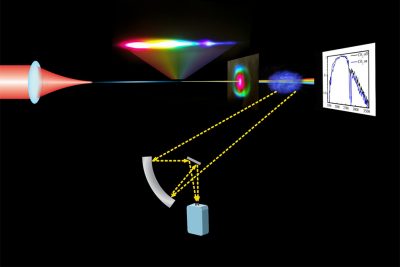
Houkun Liang, Darshana L. Weerawarne, Peter Krogen, Rostislav I. Grynko, Chien-Jen Lai, Bonggu Shim, Franz X. Kärtner, and Kyung-Han Hong
doi: 10.1364/OPTICA.3.000678
Abstract:
Laser filamentation overcomes diffraction over a highly extended distance, making itself a powerful tool for long-range stand-off detection and light detection and ranging (LIDAR) applications. Mid-infrared (mid-IR) wavelengths are optimal for detecting biochemicals and air pollutants due to molecular fingerprints. Here, we demonstrate mid-IR laser filamentations in ambient air at a kilohertz repetition rate for the first time. Laser filaments significantly longer than the linear confocal parameter are generated with a pump power exceeding the critical power in air using a kilohertz, 2.1 μm, femtosecond, multi-millijoule optical parametric chirped-pulse amplifier. Odd-harmonic generation up to the ninth order at ultraviolet and the mid-IR spectral extensions up to 3.5 μm are observed. The highest third and fifth harmonic efficiencies from ambient air are obtained, to our knowledge, thanks to the extended interaction length within the filaments. Numerical simulations reproduce the harmonic generation with good agreement and confirm that the plasma effect dominates over the higher-order Kerr effect as the main defocusing mechanism of laser filamentation in our experiment. The detection of atmospheric CO2 is demonstrated via mid-IR absorption spectroscopy. High-flux ultrabroadband mid-IR filaments are useful for the fast and sensitive detection of multiple chemical species in air.
